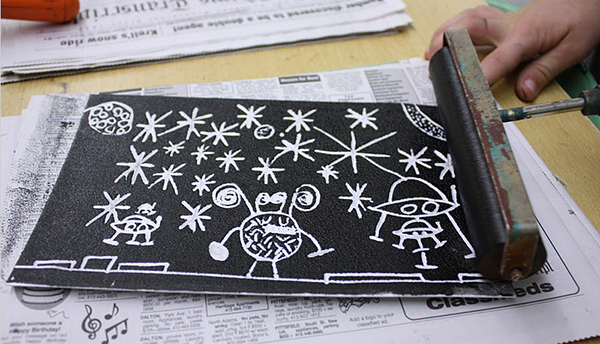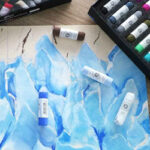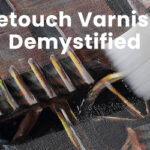5 Easy Printmaking Tips
Pro Tips for Printmaking Beginners
Although Printmaking has been around for hundreds of years now, with famous prints from artists such as Rembrandt, printmaking has recently exploded on popular social media sites like Instagram and Pinterest.
We here at Jerry’s are all for this explosion of impressions, etching, lithography, and lino carvings, so we thought we’d share some advice from professional printmakers to make getting started in this exciting medium easy for even the most novice printmaker.
See here for full list of Printmaking Supplies

1. Work in Reverse
One of the most important things to remember when printmaking from a plate, stone or block is that your printed image will be the reverse of what you carve into your linoleum or printmaking block.
To stay away from a finished project with backward words and images, plan everything out before hand with the end goal in mind so that whatever you create or the words you write end up facing the correct direction.
2. Always make sure your ink is tacky before you apply it
When you’re getting ready to ink your block, make sure you apply extra ink to your inking plate before you start rolling with your speedball brayer.
While rolling, the brayer should be completely covered and the ink should be “tacky enough” that it makes a sticking sound akin to getting your boots stuck in the mud.
3. Work Light to Dark
If you plan to use multiple colors in your print, it’s best to start with the lightest color first, then work in the darker colors. This will help your lighter colors stand out against the darker backgrounds.
4. Selecting the best prints
When printmaking, you should always make an additional 25-50% more prints (copies) than you’d originally like to, just to cover your bases in case of ink covering issues, too light/too dark etc.
Lay all your prints out on a table or working surface and then select the best one. This is called your Artist Proof. From there, your series should be the next best one that matches the proof, that is called your number one print. (For instance, if an addition is ten prints, you want to put that best print as 1/10, the next best print as 2/10 and so on.
Museums use this notation style all the time to judge famous prints for their price points when considering buying work- the lower the number, the more valuable!)
5. Want to make clean up easy?
If you want to keep your hands clean from any messy ink, the best way to protect your hands is actually by washing them before you even start getting them messy in the first place.
By washing your hands thoroughly with a water-soluble lotion, making sure you get your cuticles, fingernails, and all areas of your hand before you start, the inks will slide right off of your hands while you’re working. You’ll have such an easy clean up when you’re done, you’ll wonder why art was ever considered messy in the first place.





